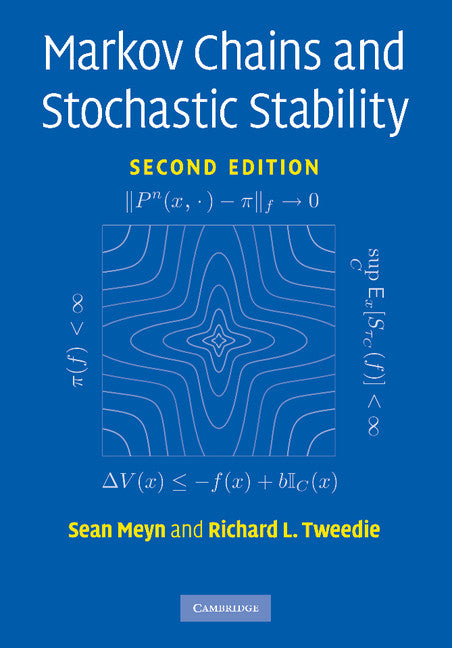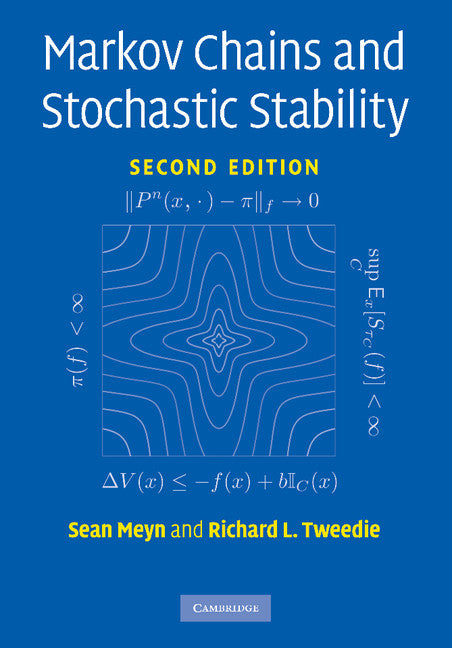Freshly Printed - allow 8 days lead
Couldn't load pickup availability
Markov Chains and Stochastic Stability
New up-to-date edition of this influential classic - the bible on Markov chains in general state spaces is back.
Sean Meyn (Author), Richard L. Tweedie (Author), Peter W. Glynn (Prologue by)
9780521731829, Cambridge University Press
Paperback, published 2 April 2009
624 pages, 4 b/w illus.
24.7 x 17.4 x 3.2 cm, 1.12 kg
'This second edition remains true to the remarkable standards of scholarship established by the first edition … it will no doubt be a very welcome addition to the literature.' Peter W. Glynn, Prologue to the Second Edition
Meyn and Tweedie is back! The bible on Markov chains in general state spaces has been brought up to date to reflect developments in the field since 1996 - many of them sparked by publication of the first edition. The pursuit of more efficient simulation algorithms for complex Markovian models, or algorithms for computation of optimal policies for controlled Markov models, has opened new directions for research on Markov chains. As a result, new applications have emerged across a wide range of topics including optimisation, statistics, and economics. New commentary and an epilogue by Sean Meyn summarise recent developments and references have been fully updated. This second edition reflects the same discipline and style that marked out the original and helped it to become a classic: proofs are rigorous and concise, the range of applications is broad and knowledgeable, and key ideas are accessible to practitioners with limited mathematical background.
List of figures
Prologue to the second edition Peter W. Glynn
Preface to the second edition Sean Meyn
Preface to the first edition
Part I. Communication and Regeneration: 1. Heuristics
2. Markov models
3. Transition probabilities
4. Irreducibility
5. Pseudo-atoms
6. Topology and continuity
7. The nonlinear state space model
Part II. Stability Structures: 8. Transience and recurrence
9. Harris and topological recurrence
10. The existence of ?
11. Drift and regularity
12. Invariance and tightness
Part III. Convergence: 13. Ergodicity
14. f-Ergodicity and f-regularity
15. Geometric ergodicity
16. V-Uniform ergodicity
17. Sample paths and limit theorems
18. Positivity
19. Generalized classification criteria
20. Epilogue to the second edition
Part IV. Appendices: A. Mud maps
B. Testing for stability
C. Glossary of model assumptions
D. Some mathematical background
Bibliography
Indexes.
Subject Areas: Automatic control engineering [TJFM], Stochastics [PBWL], Optimization [PBU], Probability & statistics [PBT]


